Meridian Hill Park is a twelve-acre (five hectare) park just north of downtown Washington. It is one of the capital’s most beautiful parks. It features some interesting sights such as a statue of Joan of Arc and a monumental cascade.
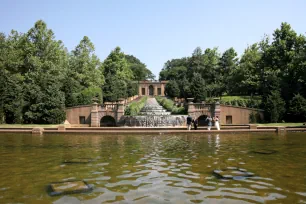
In 1804 an obelisk was installed on top of a bluff north of the White House. The obelisk served as a marker for the Washington meridian line, which was used to keep time. When a mansion was built here in 1819, the owner called the site Meridian Hill after the meridian line that runs through here.
History
The idea for a park on this site was first launched in 1906 by Mary Foote Henderson, a member of a wealthy family who owned several plots of land in the area. Four years later, the land was purchased by the federal government, who hired landscape designer George Burnap to draw up plans for a new park. Construction started in 1912 and two years later the project was handed over to the Fine Arts Commission, which oversaw the park’s creation.
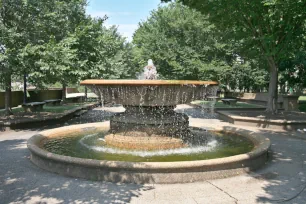
The lead of the project was handed over to Horace Peaslee, who, in coordination with Mary Henderson, implemented a modified version of Burnap’s plan, based on Italianate palace gardens.
After the completion of the Meridian Hill Park in 1936 the area around the park became one of the most desired places to live and Washington’s wealthy families built palatial mansions around the park. But Meridian Hill’s heyday didn’t last very long. In 1968 riots broke out that scared away the affluent residents and during the following decades the park became a notoriously dangerous place that was infested with drug dealers.
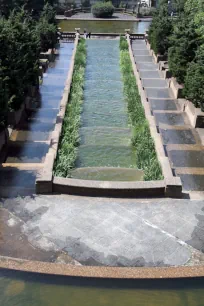
The turnaround came in the early 1990s when the area became gentrified thanks to a real estate boom and local residents created the “Friends of Meridian Hill” organization. They started to clean out the park and organised events, drawing local residents back to the park. In 2006 the park was fully restored, its fountains reactivated and statues cleaned.
Park Layout
The park is conceived as a terraced garden with two levels connected by a 300ft (90 meter) long cascading fountain.
The upper level is designed in the French style, with a grassy expanse divided into parterres by pathways. The concrete-heavy lower level and the steep hill are in a formal Italianesque style, embellished with water features and statues, and is said to have been inspired by the Villa d’Este. The defining feature of the park is the impressive cascade. Water flows from the top of the hill down thirteen basins into a large pool. At the top, the cascade culminates in a small loggia.
Monuments
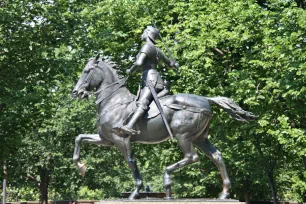
The park is embellished with several statues. The most famous statue is that of Joan of Arc, who occupies a prominent position atop the cascade and overlooks Washington from her perch. The statue depicts the patron saint of France astride a horse in full armor, holding a sword aloft in her right hand. The statue, a copy of an original by Paul DuBois, was erected here in 1922 after a French society of women had sent it as a gift to the women of the United States.
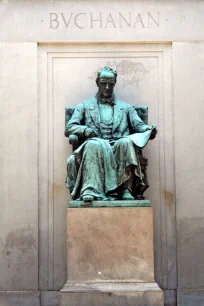
The largest monument in the park is the James Buchanan Memorial, which was installed here in 1930 on the lower level. It shows the fifteenth President of the United States seated in front of a wall, flanked by allegorical sculptures of Law and Diplomacy. The monument was created by architect William Gordon Beecher and sculptor Hans Schuler. Funds for the memorial were provided by a niece of James Buchanan, whose indecisiveness and failure to stave off the Civil War have him ranked as one of the worst presidents in the history of the US.
There are a couple more sculptures in Meridian Hill Park. In the southeast corner stands Dante Alighieri, an Italian poet from the Middle Ages. The bronze statue was created by the Italian sculptor Ettore Ximenes, and was a gift of the Italian-American newspaper magnate Carlo Barsotti in tribute to all Italian immigrants.
Another statue, entitled ‘Serenity’, depicts a seated woman. It was originally created by the Spanish sculptor José Clara. In 1900 the marble statue was purchased in Paris by a friend of the naval commander William Henry Schuetze, who dedicated it in his honor. The statue was installed here in 1924. Schuetze’s name is misspelled ‘Scheutze’ on the statue.

